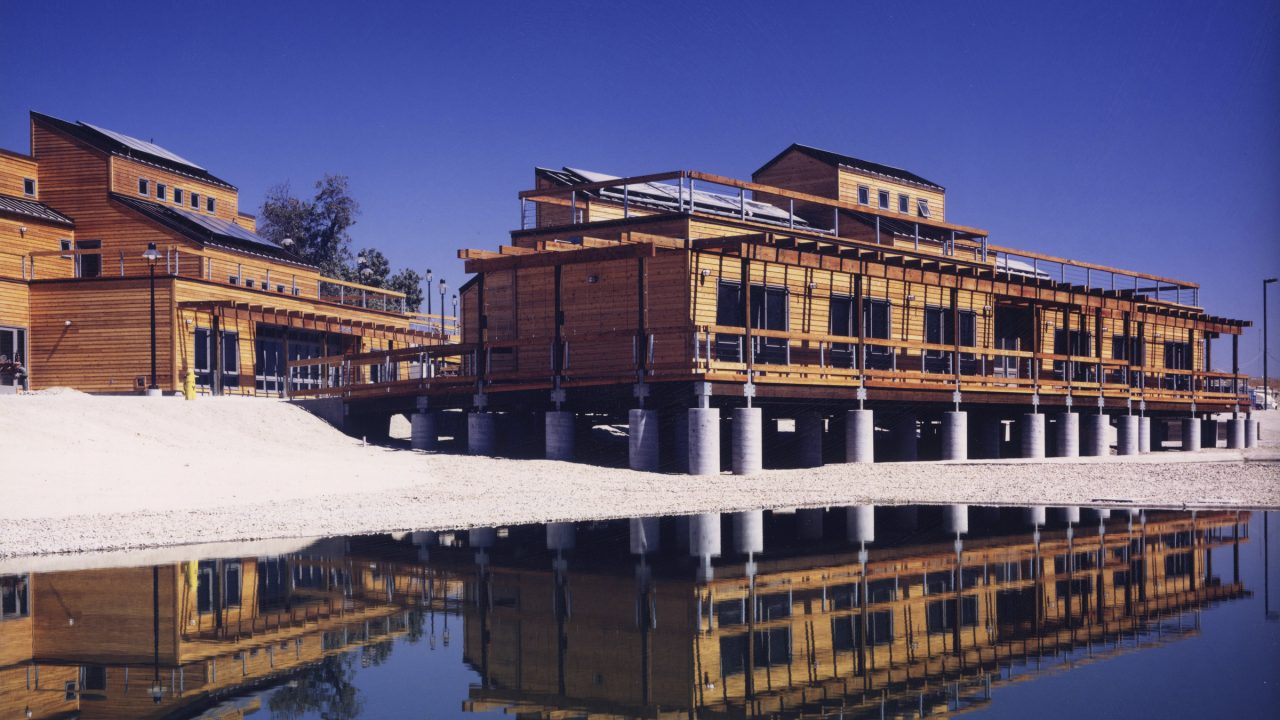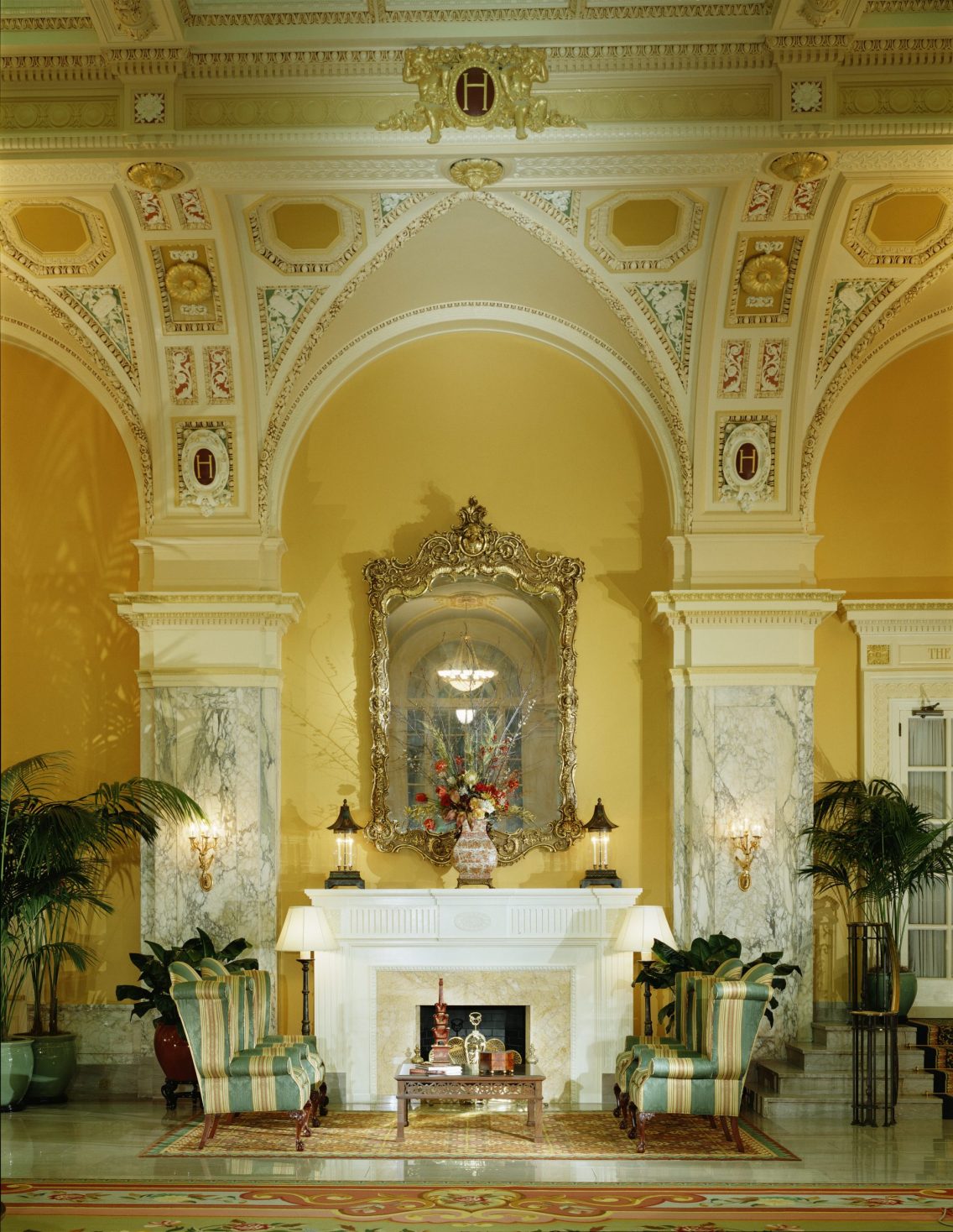
l-r: Mary-Jean Eastman; Deborah Lloyd Forrest; Betsey Olenick Dougherty; Leslie G. Moldow; Hilary Kinder Bertsch

l-r: Mary-Jean Eastman; Deborah Lloyd Forrest; Betsey Olenick Dougherty; Leslie G. Moldow; Hilary Kinder Bertsch
What’s in a name? In the fields of architecture and interior design, “Fellow” says it all. Fellows of the American Institute of Architects and the American Society of Interior Design—the professions’ oldest and most distinguished organizations—are so honored because they’ve demonstrated broad leadership, expertise, and impact within the industry. Within the AIA—founded in 1857—only 3 percent of its 95,000 members currently hold Fellowships. And just over 1 percent of ASID’s members have been thus honored since its founding in 1975.
Perkins Eastman is proud to celebrate five of its women principals who’ve been elevated into each organization’s College of Fellows over the past 30 years, including Co-Founder and Vice Chair Mary-Jean Eastman. The esteemed group met this month for a wide-ranging discussion about what, exactly, is behind the title—what it says about their careers, their success both personal and professional, and how it might empower them to help more women advance in the field.
“We believe in excellence, we have created impact, and that has been the path for several people” who’ve pursued Fellowship at Perkins Eastman, Eastman says. “We’re very much planning- and expertise-driven in many different areas, and that is recognized by the AIA.”

Co-Founder and Vice Chair Mary-Jean Eastman points to the new David H. Koch Center for Cancer Care at Memorial Sloan Kettering Cancer Center in New York as the project she’s most proud of in her career.
Photo Copyright Andrew Rugge/ Courtesy of Perkins Eastman
The path to Fellowship isn’t easy, though—often requiring more than one try—and it demands determination and self-reflection. The process is rigorous, says Hilary Kinder Bertsch, the firm’s newest FAIA who was inducted this year after her second application. Bertsch was among 31 women of 102 architects inducted this year—roughly 30 percent, the highest percentage since 2016 (as far back as AIA makes inductee records available). The women’s share in those previous years range from 17 to 28 percent.
Bertsch described the debrief with the committee who reviewed and turned down her first application. “They told me, ‘Your recommendation letters said you were doing great things, but you didn’t.’ And I was like, ‘Oh! So the primary thing that’s in the way of me actually being elevated is me recognizing my role?’ I had to take a whole new attitude when I did the rewrite this year. I took ownership for what I did.”

Principal Hilary Bertsch, who will be leading Perkins Eastman’s new Austin studio, takes the most pride in her work
on the District Wharf in Washington, D.C. Photo Copyright Sarah Mechling/ Courtesy of Perkins Eastman
And it’s not about what you’ve done, says Leslie G. Moldow, FAIA, LEED AP. “It’s about the impact of what you’ve done. If you’re the kind of person that looks to have an impact on the world, and on society, and on what we do at Perkins Eastman—Human by Design—it would be a natural extension. But I wouldn’t advise that anybody just say, ‘Well, I’ve done this, I’ve done that.’ The big question when you get the Fellow is, ‘So what?’ And you need to be able to answer that question decisively.”
That’s a tough assignment for women who are collaborative by nature, Moldow explains. “What’s very difficult and just doesn’t feel right is you have to own everything. Architecture is a team sport. Design is a team sport. We lead teams. We’re part of teams. We encourage teams. We coach teams. But when you get down to the application, you have to say, ‘I did this. I owned that.’ ”

Principal Leslie Moldow calls the award-winning Rockwood Retirement Community: The Summit one of the highlights of her career. © Copyright 2016 Benjamin Benschneider All Rights Reserved.
Nonetheless, the members of this small but powerful club emphasized why it’s so important for women to reach for their profession’s highest ranks. Deborah Lloyd Forrest, FASID, ISHC, and Founder of ForrestPerkins, a distinct studio of Perkins Eastman, says there’s a disconnect between ASID’s members and its leadership. “When I first got involved in national leadership and I would go to national headquarters and we’d have meetings in the boardroom, they had the pictures of all the past presidents of ASID up on the wall, and 90 percent of them were men, even in a profession that was majority women,” she says.
Early in Moldow’s career, she says, “When I went to an AIA event, I was assumed to be someone’s daughter or wife, and it would have been easy for me to say, ‘Well, I’m out of here,’ but I think change from within has been very powerful.”
Representation compelled Betsey Olenick Dougherty, FAIA, LEED AP, and Perkins Eastman’s most veteran Fellow, to first seek leadership within the AIA. “I became a Fellow in 1990 when I was 40 years old. I had been fighting to be at the table because when I was in school, I had heard that the AIA was male-dominated, so I just started showing up uninvited at local board meetings, and that’s where my AIA drive began,” she says.

Betsey Olenick Dougherty takes pride in the John T. Lyle Center for Regenerative Studies at Cal Poly Pomona,
one of the earliest Top 10 Green Buildings identified by the Department of Energy and, later, the AIA’s Committee on the Environment. Photo Copyright Milroy & McAleer Photography
The group agreed that there needs to be a lot more mentorship of women designers and architects as they advance through the mid-point of their careers to lay the necessary groundwork for a successful application for their professions’ highest honor.
“We need to support people better, especially females, helping them understand what experience they need, and helping them get better prepared,” Bertsch says, “so you’re not making an application today, but you’re taking the right steps to make an application in five years.” Give them more speaking opportunities, for example, or position them for leadership on projects. “I can think of—easily, off the top of my head—a dozen people at Perkins Eastman who should get into that pipeline. I believe we can be supportive and help mold their applications,” Dougherty says.
Mentoring others is essential, Forrest adds. That role also builds character. “If you can’t be brutally honest with yourself, you need to rely on your mentor to be brutally honest. It’s hard to decide what you’re going to write and say about yourself, but it’s just as hard to help someone else, and help them see what the path is,” she says.

Deborah Forrest says restoring the historic Hermitage Hotel is among her favorite design moments.
Photo Copyright Mary E. Nichols
As new generations of architects and designers are graduating from school and coming up in the industry, there’s a concern that not as many of these professionals will see the need to join organizations like AIA and ASID. “Ultimately, we’re now living in a world where the images of our work and people’s experience of our work is widely distributed” through the Internet and social media, Eastman says.
And yet, Forrest adds, “It’s a way to learn about how to be in the profession. It starts with encouraging young people to join first, no matter what.” Eastman explains why. “I always encourage people to be involved in the AIA if they are interested in leadership. You learn from other people’s leadership skills by watching them. You can learn from people in other parts of the business.” She describes a recent experience on a committee at her New York AIA chapter, where the chair was a principal at another firm, and he later left to lead a development company in Washington, D.C. “When he joined that entity, I get a call from him asking, ‘Who can you connect me to in your D.C. office?’ That call turned into Art Place at Fort Totten, a very significant commission. It’s all about the leaders you know who connect you to the rest of your community. It’s those connections and the credibility.”
Fellowship in the AIA and ASID demands going above and beyond the daily rigors of one’s job, and those additional efforts mean more time away from home—another concern that tends to weigh more on women than their male counterparts as they advance through their careers. “My daughter had just turned 20 when I got my Fellow,” Moldow says. “The most amazing gift she gave me was a letter saying how my AIA involvement and doing all this other work inspired her and affected her positively.” She proudly adds that her daughter’s letter made “any qualm I had about all those years of making a decision—‘Should I be home? Was dinner on time? How do I put extra time into this meeting?’—melt away.”
FAIA Since: 2021
Path to Fellowship: Recognized for her leadership in the design of large-scale mixed-use projects and the public realm.
Project you’re most proud of: District Wharf, a mixed-use destination reconnecting Washington, D.C., to its waterfront.
Favorite design moment: Recognizing just how collaborative architecture really is, but smiling when my young nephews announced that I built the Walt Whitman Shops in Huntington Station, NY, a repositioning of an existing shopping center near their home.
FAIA Since: 1990
Path to Fellowship: Leadership within the AIA, including President of AIA California; national board member and secretary; and chancellor of the College of Fellows.
Project you’re most proud of: The John T. Lyle Center for Regenerative Studies at Cal Poly Pomona, one of the earliest Top 10 Green Buildings identified by the Department of Energy and, later, the AIA’s Committee on the Environment.
Favorite design moment: When one of our staff is empowered to create a beautiful, sustainable, impactful design that wins a project! Very rewarding.
FAIA Since: 1997
Path to Fellowship: Widespread recognition for the design of three major public buildings in New York: The Brooklyn Public Library: Clarendon Branch; the Queens Civil Courthouse; and the 107th Police Precinct, also in Queens.
Project you’re most proud of: The David H. Koch Center for Cancer Care at Memorial Sloan Kettering Cancer Center, New York. It took a highly aspirational client, a dedicated team – and a decade of work.
Favorite design moment: When we photograph the interior of a completed project, we style it in our vision. We place all the furniture as we want it. We style the image with the accessories we hope the client will add. The space is still ours, and we enjoy the realization of our vision. Then we take that image and turn our child over to the client to live its fruitful life.
FASID Since: 2000
Path to Fellowship: Led a national ASID campaign in the 1990s to help solo design practitioners and small firms get set up with computers and connected to the Internet.
Project you’re most proud of: Having to select only one, it has to be The Empress Hotel (now Fairmont Empress), which really launched my international hotel design practice. It is significant for its iconic stature but also for me because I was too green to be afraid to recognize limitations and obstacles.
Favorite design moment: The honor of being able to work with talented members of my team, led by longtime ForrestPerkins member Toby Bishop, to renovate the Hermitage Hotel in Nashville. ForrestPerkins restored this iconic property in 2006, and we are now giving the hotel a new, more modern sensibility while respecting the beautiful historic interior architecture of this iconic building. Since this is Women’s History Month, it is important to note that the final ratification of the 19th Amendment giving women the vote happened at The Hermitage in 1920 when, by one vote, Tennessee was the last state to ratify. The hotel hosted a number of centennial celebrations last year in our beautiful lobby to commemorate this historic event.
FAIA Since: 2010
Path to Fellowship: Nominated for her work in senior-living development project design.
Project you’re most proud of: Rockwood Retirement Community: The Summit, an AIA Award winner. I believe it was the first project in Perkins Eastman’s portfolio and the senior living industry to consider all the dimensions of wellness for the user and to integrate principles of biophilic design. Our post-occupancy evaluation demonstrated that the design had a positive influence on new residents in terms of their physical, emotional, and social well-being.
Favorite design moment: That “Eureka!” moment early in the design process when the core concept of the design comes together with the team, when it feels like the design has just revealed itself once we’ve gained an understanding of the site and program, and collaborated with the owner on critical project goals.